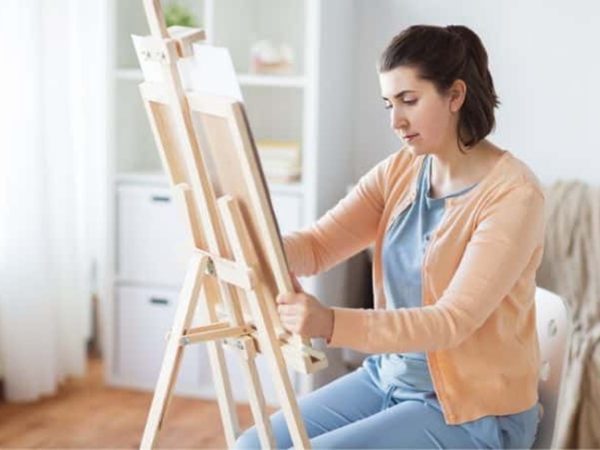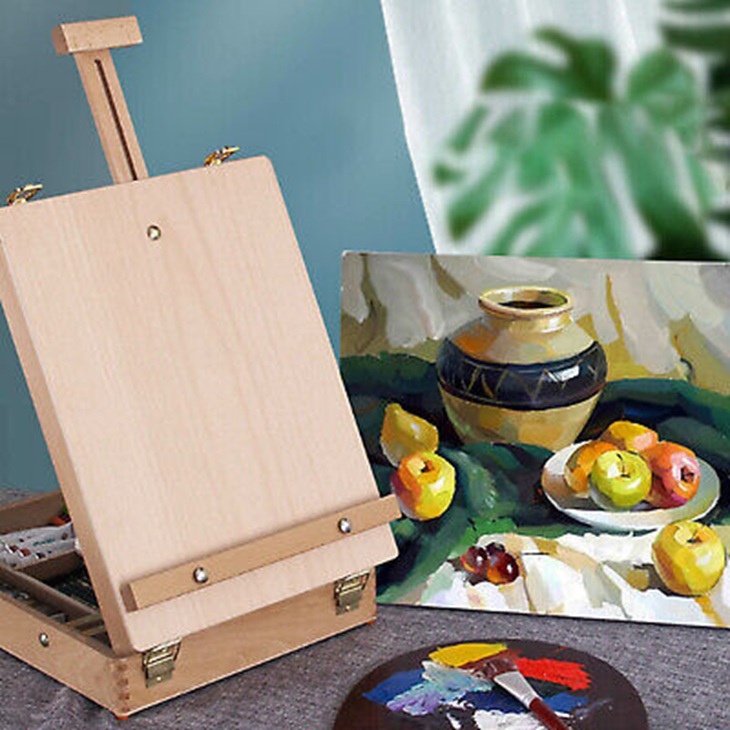28
Apr

If you’re fed up working with your paper or canvas flat on the kitchen table because it hurts your back leaning over it, whether you’re standing or sitting, it’s time to invest in an art easel. It is a supportive framework that holds canvases or other surfaces in place while artists work. Its primary role is to provide stability, adjustability and versatility, enabling artists to comfortably create their artworks. Looking for the right option, however, isn’t always a straightforward decision.

Whether you’re working on small pieces or creating larger art projects in a studio, enjoy a diverse selection of premium paint easels to suit all your practices.
H-shaped easels are built around a central wooden column that holds the canvas supports. These designs have a square base with the H-frame on the front and an angled support on the rear. This allows you to change the of the easel without affecting its stability. These easels are heavier than radial easels, but they are more durable and can accommodate a wider range of painting supports. Some H-frame types feature a shelf or drawer built underneath the lower canvas support, which provides very useful storage space for items such as your favoured colours, brushes and rags.
The main structure of the A-Frame paint easels is triangular, with three pieces of wood forming a triangle, two in the front and one in the back. A central canvas support connects the two front legs and holds the top and bottom canvas ledges. On affordable A-frame easels, this column is set at the angle of the two front legs; on more expensive easels, it can be moved to a more vertical position. A-frame art easels cannot be configured for horizontal ‘table-style’ operation.
The best part about the A-frame design is that they are easy to fold flat from the hinge at the top of the easel which makes them easy to stack in the corner of a room. They are a little lighter than H-frames which suits those who will need to move it around frequently. However, these cannot adjust to horizontal angles for watercolourists but some have the ability to tilt forward for soft pastel work.
Radial easels, with their slim shape and three short legs at the base, are ideal for life drawing and other observational work since it is easy to put in front of a subject and take up little room. For those who like to work sitting down, the donkey paint easel offers a seat and support for your drawing board at one end, as well as a convenient pencil drawer at the other.
Field easels for art are made of wood or aluminium and are ideal for outdoor painting. They are smaller and lighter than studio ones and fold into a compact bundle for easy transport. Most field easels feature telescoping legs that may be extended to various heights for sitting and standing positions. Field easels for painting are also ideal for artists working indoors with limited space.
The nature of your artwork has a big impact on the paint easel you will require. For example, if you work with large canvases or create art in different locations, a sturdy studio design could be the best alternative. If you work on smaller projects or prefer to work outside, a portable or tabletop alternative may be more suitable.
The weight of your artwork may also be significant to consider. Although most easels can support hefty canvases, artists who use a range of mediums, thick paint and collages should double-check that their work does not surpass this weight limit. If you frequently paint on heavy canvas for techniques like impasto, consider purchasing a heavier studio option.
Painting easels, similar to drawing boards, are available in a range of materials such as wood, aluminium and steel. Think about the longevity and stability of the media you work with. A robust wooden easel can accommodate heavyweight materials like large canvases or mixed media, yet lightweight materials may be acceptable for smaller, less demanding projects.
Ergonomics are crucial. Look for easels that have adjustable height, angle and canvas size capabilities. This adaptability ensures your comfort during long hours of work and allows for a wide range of art techniques and styles.
Assess your workspace as well. Some easels are compact, collapsible or have a small footprint, making them perfect for smaller studios or shared areas. These are crucial for those who have to deal with limited space.